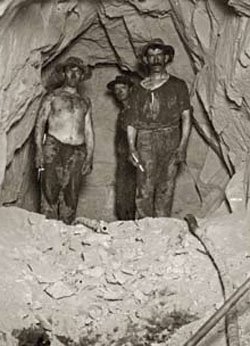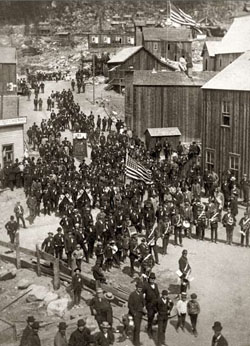Montana: Stories of the Land
Companion Website and Online Teacher's Guide
Chapter 10 - Politics and the Copper Kings, 1889-1904
Chapter 1 - Montana: Where the Land Writes History
Chapter 2 - People of the Dog Days
Chapter 3 - From Dog Days to Horse Warriors
Chapter 4 - Newcomers Explore the Region
Chapter 5 - Beaver, Bison, and Black Robes
Chapter 6 - Montana's Gold and Silver Boom
Chapter 7 - Two Worlds Collide
Chapter 8 - Livestock and the Open Range
Chapter 9 - Railroads Link Montana to the Nation
Chapter 10 - Politics and the Copper Kings
Chapter 11 - The Early Reservation Years
Chapter 12 - Logging in the "High Lonesome"
Chapter 13 - Homesteading This Dry Land
Chapter 14 - Towns Have Lives, Too
Chapter 15 - Progressive Montana
Chapter 16 - Montana and World War I
Chapter 17 - Montanans on the Move
Chapter 18 - The Great Depression Transforms Montana
Chapter 19 - World War II in Montana
Chapter 20 - Building a New Montana
Chapter 21 - A People's Constitution
Chapter 22 - Living in a New Montana
Why Did William A. Clark and Marcus Daly Hate Each Other?
The short answer is that no one really knows. Historians have posited several theories. Many historians point to Daly's support for William A. Clark's opponent in the 1888 campaign for territorial delegate as the beginning of the feud. They speculate that Daly supported Republican Thomas Carter because he believed a "Republican would have greater leverage with what Daly ... presumed to be a Republican administration in 1889, and that his leverage could and would be used to squash or at least slow the prosecution of the indictments filed by Democratic President Grover Cleveland's administration against Daly and his associates' illegal timber cutting operations." (Montana Heritage, 153-54.) This is the explanation presented in the textbook.
Historian David Emmons, on the other hand, suggests a cultural explanation. In "The Orange and The Green in Montana: A Reconsideration of the Clark-Daly Feud," Emmons points out that Clark was of Scotch-Irish descent (an "Orange") while Daly was an Irish Catholic (a "Green"). According to Emmons, Daly was very active in Irish Catholic nationalist organizations and primarily hired Irish Catholic immigrants. Clark, by contrast, primarily hired Protestant Cornishmen from England. According to this theory, the "bitter enmity between Northern Ireland Protestants and Irish Catholics" defined the two men's feelings toward one another (Montana Heritage, 154).
Most likely, cultural, economic, and political factors all contributed to the feud, with personality probably playing a role as well.
Among the best books on the Clark-Daly feud is Battle for Butte: Mining and Politics on the Northern Frontier, 1864-1906, by Michael P. Malone (Seattle: University of Washington Press, 1981). Emmons's article, "The Orange and the Green" was originally published in Arizona and the West, 28 (Autumn 1986): 225-45 and reprinted in Montana Heritage: An Anthology of Historical Essays, edited by Robert R. Swartout Jr. and Harry W. Fritz (Helena: Montana Historical Society Press 1992).


